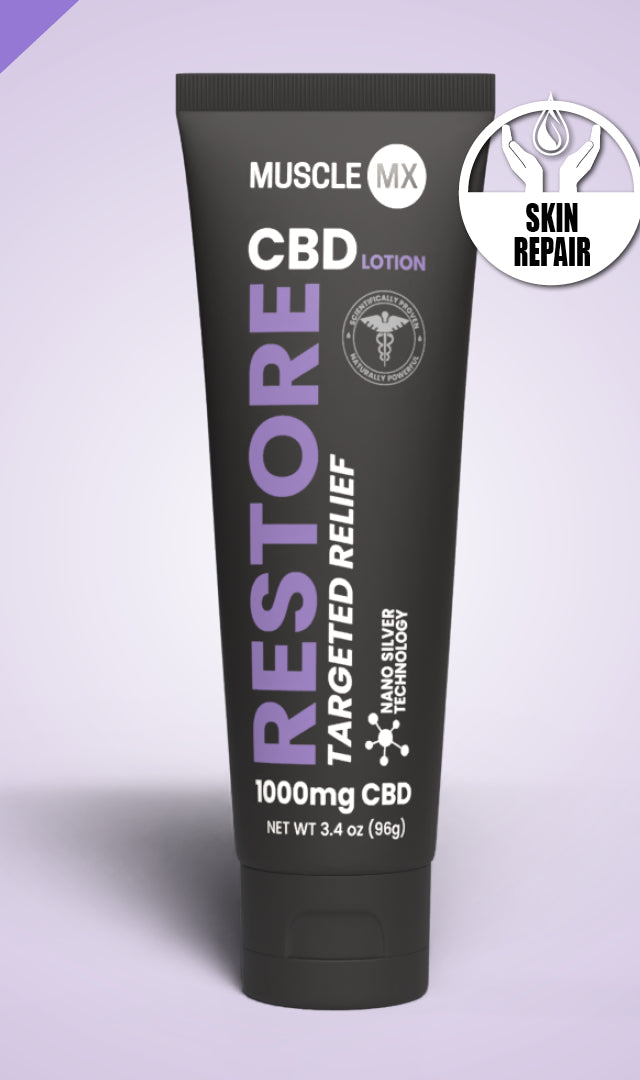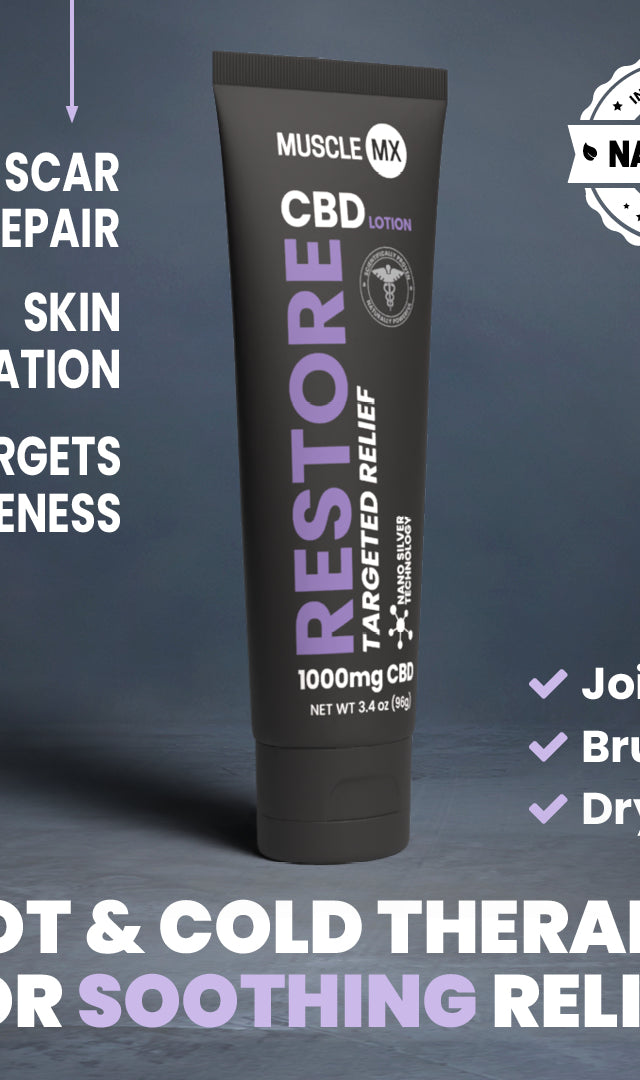Wrist Pain: Causes & How To Find Relief
You may have felt that nagging discomfort in your wrist that doesn't seem to go away. It can be frustrating, especially when unsure what's causing it.
However, here's the good news: You're not alone. Wrist discomfort is a common issue that many people grapple with. It's important to understand that learning about what might be causing your discomfort is an important first step toward finding relief.
Let’s discuss wrist discomfort, its causes, and how to ease the tension.
What Can Cause Wrist Discomfort?
Wrist discomfort can be a real bother, especially when it interferes with daily activities. But what causes it? It can result from several factors — we’ll break them down for you.
Overuse
Think about how often you use your hands and wrists every day. Whether typing away on your computer, scrolling through your phone, or carrying out repetitive manual tasks, your wrists are constantly at work. This non-stop action can sometimes lead to a buildup of tension in the wrist, causing discomfort.
Injuries
Accidents or injuries can also lead to wrist discomfort. For instance, a fall on an outstretched hand can cause a sprain or fracture, leading to persistent discomfort if not properly treated. Even minor injuries can sometimes lead to long-term discomfort if they cause damage to the ligaments or tendons in the wrist.
Age-related Issues
As we go through life, our bodies change along with us. With its extensive network of bones, ligaments, and tendons, the wrist is no exception. Over time, the cartilage that cushions the wrist can wear down, leading to conditions like osteoarthritis.
This can result in discomfort and a reduced range of motion. It's a natural part of aging, but understanding it can help you take steps to manage it.
Exercise and Improper Form
Engaging in regular exercise is fantastic for overall health, but without proper form, it may contribute to wrist discomfort. Activities like weightlifting, tennis, or golf that involve repetitive wrist motion can put a lot of stress on the wrist if not done correctly.
For example, incorrect form while lifting weights can place undue pressure on the wrist, leading to discomfort. Similarly, repetitive movements in sports like tennis or golf can cause tension buildup in the wrist over time.
Learning the correct techniques and form to protect your wrists while staying active is essential. If you're unsure, consider seeking advice from a fitness professional to ensure your wrists stay happy and healthy.
A variety of factors can cause wrist discomfort. It's important to understand what might be causing your discomfort so you can take steps towards relief. Whether it's making changes to your daily activities, seeking medical attention for injuries, or addressing lifestyle factors, there are ways to ease your wrist discomfort and get back to feeling your best.
What Can Wrist Discomfort Feel Like?
Wrist discomfort isn't the same for everyone. It can range from a mild annoyance to a debilitating issue that interferes with daily activities. Some common symptoms include a dull ache in the wrist, a feeling of stiffness or tightness, or a sensation of heat or throbbing.
You might also notice that certain movements, like twisting your wrist or gripping objects, become more challenging. Sometimes, you could even experience numbness or tingling in your hand or fingers, a sign that your wrist discomfort could impact the nerves.
Paying attention to these symptoms is key. If you can spot the signs of wrist discomfort early on, you can take steps to manage it before it worsens. Remember, wrist discomfort isn't something you just have to "live with." Understanding your symptoms can help you take control of your wrist health and find ways to ease the tension.
What Are Ways To Ease Wrist Tension?
You're dealing with wrist discomfort. Now what? The good news is you can work to ease wrist tension in plenty of ways.
Here are some strategies that might help:
Lifestyle Changes
Small changes often lead to significant results. Take regular breaks if your work or hobbies involve repetitive wrist movements, like typing or knitting. Also, consider investing in ergonomic tools, such as a wrist-friendly keyboard or mouse for computer work or wearing a supportive brace during activities that strain your wrist.
Wrist Exercises and Stretches
Incorporating wrist stretches into your daily routine can help increase flexibility, build strength, and ease discomfort. Wrist stretching exercises such as the wrist flexor or prayer stretch are great options.
They work by gently extending the muscles and tendons in your wrist, supporting better form and function. Grip-strengthening exercises can also be beneficial. Try squeezing a stress ball or a grip strengthener device for a few minutes daily.
Remember to start slow, listen to your body, and gradually increase the intensity of your stretches to avoid exacerbating discomfort. Always consult with a healthcare provider before starting any new exercise regimen. With time, consistency, and the right approach, you can make strides in managing your wrist tension.
Proper Ergonomics
Ensuring your workstation is ergonomically correct can help ease wrist tension if you spend a lot of time at a computer. Your keyboard should be at a height that allows your wrists to be straight while you type. A wrist rest can also be helpful.
Get the Right Nutrients
Your diet is important to your overall health, including your wrist health. Consuming a balanced diet rich in essential nutrients like vitamin K, which plays a role in cartilage mineralization, can support joint health and flexibility.
Omega-3 fatty acids, found in foods like fish and flaxseeds, can also help maintain healthy stress levels in the body. Therefore, make sure you're fueling your body with the right nutrients.
Take Rest Days When Needed
Rest is just as important as activity for maintaining healthy wrists. If you're feeling discomfort after a workout, it's your body's way of saying it needs time to recover. Don't push through the discomfort — give your wrist the rest it needs.
It’s also important to vary your workouts, ensuring you aren’t working the same muscle groups daily, which can lead to strain and discomfort from overuse. With the right balance of activity and rest, you can support your wrist health and continue to enjoy your favorite activities.
Mindfulness and Relaxation Techniques
Techniques such as deep breathing, progressive muscle relaxation, and even yoga can help you relax and might help ease wrist tension. Taking a few moments each day to focus on your breath or engage in a mindfulness practice can make a big difference.
By tuning into your body and giving it the relaxation it needs, you're promoting physical wellness and supporting your mental well-being.
Use Supportive Gear as Needed
Using supportive gear like a wrist brace can be beneficial if your wrist discomfort persists. Wrist braces can provide the extra support your wrist needs, helping to minimize discomfort during activities.
They can also keep the wrist in a neutral position, especially during sleep, to prevent further tension. These tools can work with other methods like stretching and improving posture for added support.
Try CBD
CBD, or cannabidiol, is a compound found in cannabis plants. It's been lauded for its potential to help maintain healthy stress levels and support relaxation. CBD doesn't make you high, but it does have properties that can work together with your body to help you feel more balanced by supporting relaxation and helping ease feelings of discomfort.
How Can CBD Help Ease Feelings of Discomfort?
CBD works with our body’s endocannabinoid system (ECS), a complex system in our bodies that influences various functions, including emotional wellness and discomfort. This system has receptors, known as CB receptors, in muscles and joints.
By supporting our own internally produced chemical messengers known as endocannabinoids, as they work with CB receptors without the nervous system, CBD can help ease feelings of discomfort.
CBD topicals are particularly suited for soothing localized discomfort, as they’re applied directly at the source of discomfort. When massaged into the wrist, the CBD can get straight to work, offering fast-acting support as needed.
At Muscle MX, we use only clean, natural ingredients to create our CBD Balms. Paired with menthol, peppermint oil, and arnica, our balms deliver a soothing and refreshing experience, aiming to provide targeted support for your wrist discomfort.
When Should You Seek Professional Help?
While there are many ways to manage wrist discomfort at home, it's important to know when to seek professional help. If your discomfort persists, worsens, or is accompanied by severe symptoms like intense pain, loss of motion, or signs of infection such as fever, it's time to see a healthcare provider.
Getting professional help ensures you get a proper diagnosis and appropriate treatment. Don't hesitate to contact a healthcare provider if your wrist discomfort affects your quality of life. Remember, your health is worth it. Your wrists do a lot for you, so don't hesitate to do something for them in return.
The Bottom Line
While wrist pain can challenge your daily routine, understanding the common causes, recognizing the symptoms, and knowing how to ease feelings of tension can be your guiding light.
Remember, every wrist is unique, and so is every discomfort. What works for one might not work for another. However, it is important not to ignore it. Take proactive steps, whether making lifestyle changes, trying out exercises, or exploring the benefits of CBD.
We invite you to explore Muscle MX's full range of CBD wellness products. Each product is designed with your wellness in mind, offering a natural approach to supporting relaxation and easing feelings of tension.
Above all, listen to your body. If your discomfort persists or worsens, don't hesitate to get professional help. You're paving the way for healthier, happier wrists tomorrow by taking action today.
Sources:
Wrist pain - Symptoms and causes | Mayo Clinic
5 stretches to help relieve wrist pain | NBC News
What is the evidence for a role for diet and nutrition in osteoarthritis? | PMC
Mindfulness meditation–based pain relief: a mechanistic account | PMC













































